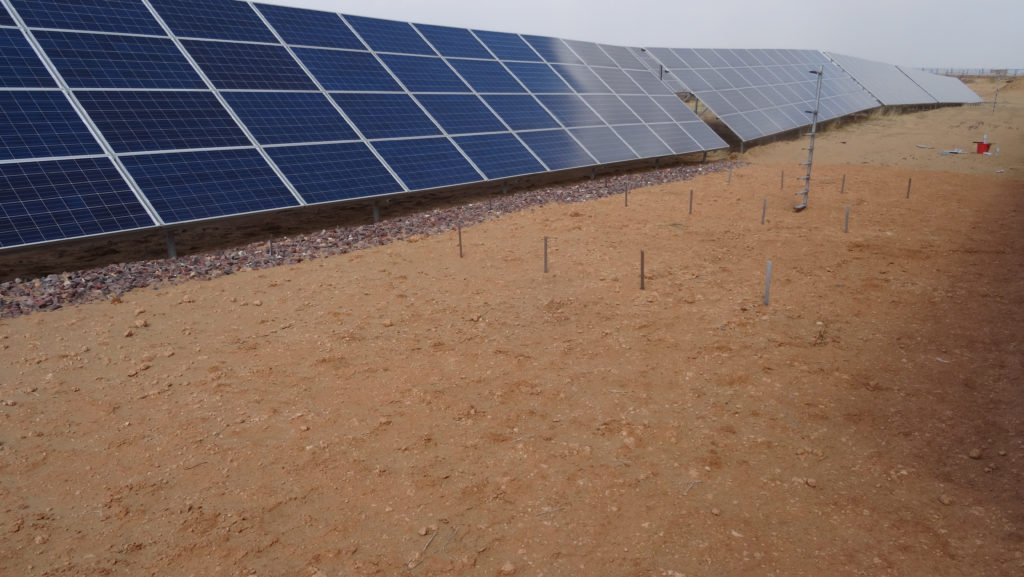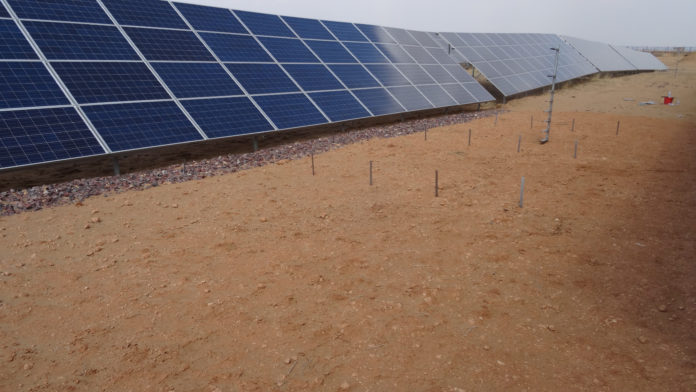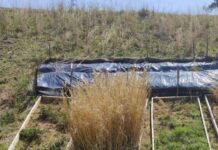By Rich McLaughlin, Ph.D.
In some areas, preventing erosion is a relative “walk in the park” involving simple soil amendments, seeding and placing a temporary cover until the vegetation is established. For many other areas, this approach is not likely to succeed due to steep slopes, poor soil conditions and climate. A couple of recent studies explored options for these challenging environments and provided recommendations based on their findings.
Italian Mountainside
A study in the mountains of Italy explored the vegetation composition either one to nine or 16 to 31 years after vegetation establishment was attempted to slow erosion on landslides or quarry slopes.1 All of the slopes were “rehabilitated” using either a mixture of herbaceous plant seeds or that plus strips of woody plants, both with a temporary straw cover. The soils were greater than 50% gravel and even the fine portion was a loamy sand, so soil moisture holding capacity was quite low. The areas with herbaceous seeding had good cover soon after establishment, but the non-natives tended to disappear by years six to nine and the native species did not fill in at that point, dropping the cover from 95% to 50%. This was particularly evident where moisture was most scarce—in thinner soils and on southern exposures. Eventually planted natives and volunteer species did fill in to some extent. By the second period (16 to 31 years), the areas with only herbaceous planting had 70% cover, while those that included woody plants had over 95% cover and a 100% litter cover. The authors recommended that herbaceous species that do not thrive in such difficult conditions be avoided except in some situations where cover is needed quickly. They also suggested that woody native species should always be included to help reestablish ecological functions.

Chinese Solar Installation
The combination of sandy soil, periods of low rainfall and wind provided a very challenging erosion control problem for solar panel installations in northwest China.2 In this study, many different treatments were tested in different zones under and around the solar panels. The panels tended to funnel the prevailing north winds under them, scouring soil and depositing it downwind. While the testing area receives an average of 430 mm of rain, it is very seasonal and sandstorms are frequent. There were four engineered methods: straw inserted into the soil in a checkerboard pattern, gravel or clay mulch or a combination of gravel and clay mulch. These were tested in the 6 m zone between the panels. In addition, two different plants (Sedum and Pennisetum sp.) were tested both under the panels and between them. Two different biocrust treatments (cyanobacteria and moss) were tested only under the panels, and this included the checkerboard-pattern straw to help get the biocrusts established. The plants were watered every other day for a month after planting, and the biocrust treatments were watered with a nutrient solution every other day for 75 days.
Erosion and deposition rates were measured in the deflation (under the panel), abrasion (lower edge) and deposition (downwind before next panel) zones for one year. All of the treatments reduced erosion to some degree relative to the control. For the engineered controls, placing gravel in the abrasion zone and clay in the deposition zone resulted in the greatest reduction in erosion at 87%. This was followed by gravel alone (78%), clay alone (74%) and straw (51%).
Underneath the panels, the vegetation reduced erosion by 20% to 36% and between the panels by 78% to 86%. The biocrust treatments were both effective at reducing erosion under the panels by 65% to 71% compared to the straw checkerboard alone. Overall, the authors recommended the moss-based biocrust under the panels and the gravel-clay combination between the panels. They also noted how much erosion was generated by the placement of solar panels in this fragile, desert area and that investigating methods to control erosion are clearly necessary.

References
1) Scotton, M., and D. Andreatta. 2020. Anti-erosion rehabilitation: Effects of revegetation method and site traits on introduced and native plant cover and richness. Science of the Total Environment 776 (2021) 145915. https://doi.org/10.1016/j.scitotenv.2021.145915.
2) Wang, C., R. L. Hill, C. Bu, B. Li, F. Yuan, Y. Yang, S. Yuan, Z. Zhang, Y. Cao, and K. Zhang. 2020. Evaluation of wind erosion control practices at a photovoltaic power station within a sandy area of northwest, China. Land Degrad Dev. 2021;32:1854–1872. https://doi.org/10.1002/ldr.3839.
About the Expert
Rich McLaughlin, Ph.D., received a B.S. in natural resource management at Virginia Tech and studied soils and soil chemistry at Purdue University for his master’s degree and doctoral degree. He is a professor and extension specialist in the Soil Science Department at North Carolina State University in Raleigh, North Carolina, specializing in erosion, sediment and turbidity control.













